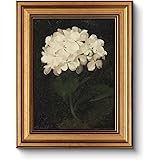Remember that moment you craved a truly unique lighting fixture? Standard store-bought lamps often lack personal flair. The amazing video above showcases a brilliant **DIY PVC pipe lamp**. This project transforms simple PVC pipe. It creates a stunning piece of **modern lighting** for any space. We delve deeper into the craft.
Building your own **PVC pipe lighting** fixture is immensely rewarding. It combines creativity with practicality. Imagine the satisfaction of installing a custom lamp. This guide expands on the video’s steps. It provides crucial insights for your build. We cover design, component choice, and finishing techniques.
The Foundation: Understanding PVC Pipe for Lighting
PVC pipe is an incredibly versatile material. It offers durability and ease of manipulation. The video specifies a 3-inch diameter pipe. Its length is precisely 23 cm. These dimensions create a compact design. This size is ideal for a stylish **DIY wall lamp**.
Choosing the right PVC grade is important. Schedule 40 PVC is common and robust. It withstands heat generated by low-wattage LEDs. Its rigid structure supports the lamp design. Furthermore, PVC is lightweight. This simplifies mounting your finished fixture.
Precision Layout: Crafting the Apertures
Accurate measurements are paramount for clean aesthetics. The video demonstrates precise marking. Distances of 1 cm and 10.5 cm are crucial. Repeated 2 cm increments define the pattern. These lines guide your cutting and drilling. Imagine an asymmetrical, haphazard result; precision avoids this.
A paper template, 10×35.5 cm, aids consistency. It wraps around the pipe surface. Markings transfer uniformly onto the PVC. This step ensures symmetrical light dispersion. It guarantees a professional-looking **modern lighting** fixture.
Tools and Techniques for PVC Fabrication
The project uses a hand grinder for intricate cuts. This tool offers control for shaping the pipe. Safety glasses are always essential during operation. A cutter knife helps refine edges. It smooths any rough plastic remnants.
Drill stone bits create circular openings. A Ø 10 mm bit is used for larger holes. A Ø 5 mm bit creates smaller, detailed openings. These varying hole sizes add visual interest. They also contribute to the light’s unique projection. Sandpaper then finishes all cut edges, ensuring a smooth surface.
Illuminating Core: LED Integration in Your DIY Wall Lamp
The heart of this lamp is the LED HPL 1 Watt. HPL stands for High Power LED. These components offer strong light output. They are also incredibly energy efficient. Their compact size integrates perfectly into the **PVC pipe lighting** design.
An LED driver (1-3 Watt) is indispensable. It converts AC power to the DC voltage needed by the LED. It also regulates the current. This prevents LED burnout and ensures longevity. Using the correct driver is critical for safe operation.
Thermal Management and Electrical Safety
Even low-wattage LEDs generate heat. Proper thermal management prevents premature failure. The video shows a PVC sheet (2×8 cm). This can act as a mounting base. For optimal heat dissipation, consider adding a small metal heatsink. Thermal paste can further improve heat transfer from the LED to its mount.
Electrical safety is non-negotiable for any **DIY wall lamp**. Always disconnect power before working on wiring. Make sure all connections are secure. Use appropriate gauge electrical cable. If you are unsure about wiring, consult a qualified electrician. This ensures a safe and reliable **modern lighting** solution.
Aesthetic Transformation: Finishing Your PVC Pipe Lamp
The choice of finish drastically alters the lamp’s appearance. Black and gold spray paints are used in the video. Black provides a sophisticated, contemporary look. Gold offers a touch of elegance and contrast. Imagine a metallic bronze or a vibrant matte white instead.
Proper surface preparation is vital for paint adhesion. Sanding the PVC creates a textured surface. This allows the spray paint to bond effectively. Applying several thin coats yields the best results. This avoids drips and ensures an even finish. The finished product truly elevates this **PVC pipe lamp**.
Assembly and Secure Mounting
PE foam tape secures components internally. It provides cushioning and insulation. Instant glue offers a strong, fast bond. Using PVC powder with instant glue creates a formidable adhesive. This method fills gaps and reinforces joints. It ensures the lamp’s structural integrity.
Making a hole for the cable line is a final step. This allows for neat, secure wiring. Test all electrical connections thoroughly. Before mounting, confirm all components function correctly. This attention to detail results in a reliable **DIY PVC pipe lamp**.











